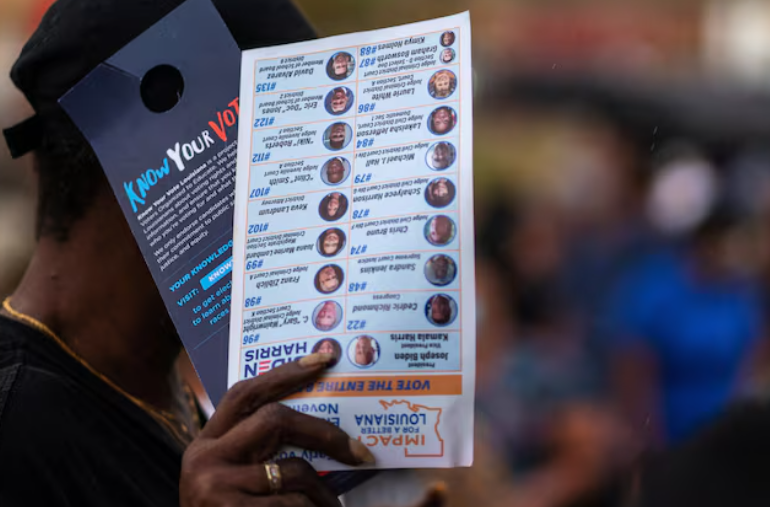The Supreme Court restored Louisiana’s electoral map, designating two of the state’s six congressional districts with Black-majority populations for the upcoming Nov. 5 election.
This decision, made on Wednesday, could significantly impact which party controls the U.S. House of Representatives.
State officials and a group of Black voters requested the Supreme Court to temporarily halt a federal three-judge panel’s decision, which had thrown out Louisiana’s newly redrawn map.
The new map included two Black-majority U.S. House districts, compared to the single Black-majority district in the previous version. Black voters generally support Democratic candidates.
On April 30, the judicial panel ruled 2-1 that the map primarily focused on race, violating the U.S. Constitution’s 14th Amendment guarantee of equal protection.
The panel ordered the creation of a new map. This decision marked the latest development in a long-standing legal battle over Louisiana’s U.S. House district boundaries. Currently, Republicans hold a 217-213 margin in the House, and ongoing redistricting legal battles in several states could determine whether Republicans retain control or Democrats regain a majority.
In January, the Republican-controlled Louisiana legislature approved the new map, adding a second Black-majority district. U.S. District Judge Shelly Dick had previously found that the earlier Republican-drawn map illegally disadvantaged Black voters, likely violating the Voting Rights Act of 1965, which prohibits racial discrimination in voting. In 2023, the Supreme Court upheld Judge Dick’s ruling. The rejected map had only one Black-majority district, despite Black voters constituting nearly a third of Louisiana’s population.
A group of Louisiana voters identifying as “non-African American” challenged the redrawn map in January, arguing that it was an unconstitutional “racial gerrymander” violating the 14th Amendment’s equal protection guarantee. The judicial panel, siding with the challengers, ordered Louisiana’s legislature to produce a new map by June 3. If the legislature failed, the panel could have imposed its own map, which might not have included a second majority-Black district.
Two judges appointed by Republican former President Donald Trump supported the panel’s ruling, while a judge appointed by Democratic former President Bill Clinton dissented. State officials and Black Louisiana voters, backed by civil rights groups, then asked the Supreme Court to temporarily halt the decision while pursuing a formal appeal. Louisiana’s Republican Secretary of State Nancy Landry emphasized the need for an established map by Wednesday to “accurately administer the congressional election.”
The Supreme Court, with its 6-3 conservative majority, saw its three liberal justices dissent from Wednesday’s decision. Justice Ketanji Brown Jackson argued that the Supreme Court’s intervention, aimed at preventing voter confusion from judicial decisions changing rules near an election, was unnecessary this far ahead of Nov. 5. She stated, “There is little risk of voter confusion from a new map being imposed this far out from the November election. In fact, we have often denied stays of redistricting orders issued as close or closer to an election.”

